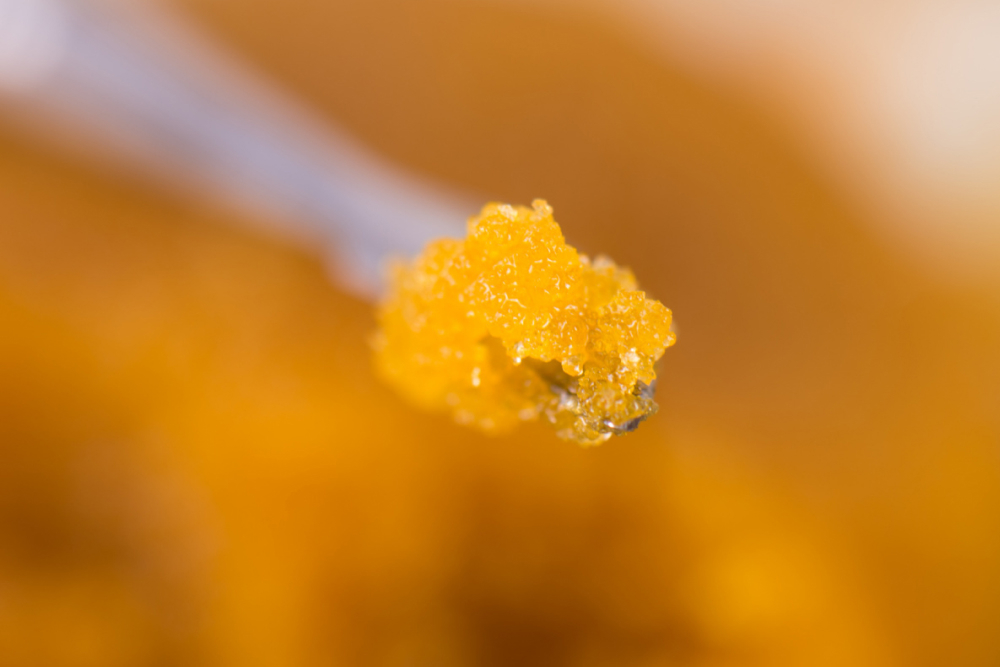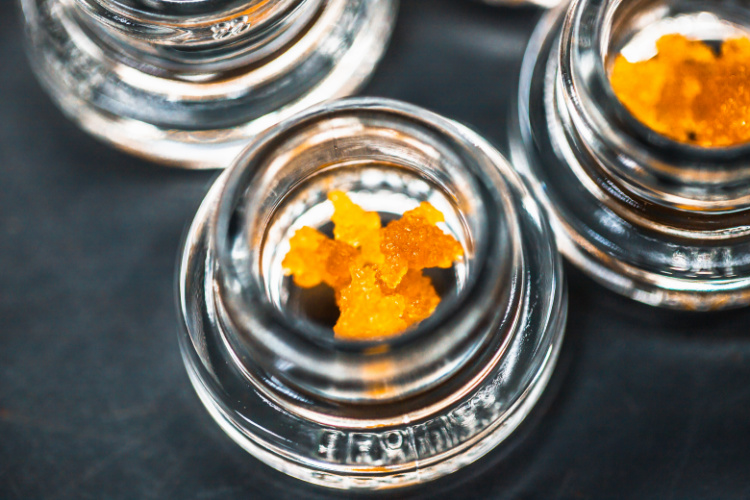For decades, cannabis cultivators have been on a quest to increase the potency of cannabis cultivars, but fresh flower can only express so much THC before it tops out, usually in the 30% – 35% THC range. Enter cannabis concentrates.
As the name suggests, concentrates have “concentrated” levels of chemicals from the cannabis plant, particularly the psychoactive cannabinoid THC or the non-intoxicating CBD. Although all concentrates share very high potency levels, there are important distinctions between different products.
For instance, THC wax, also called weed wax or simply just wax, is a specific type of concentrate with a distinctive appearance and texture that remains a favorite among the customers at our DC dispensary. Learn more about the nuances of cannabis wax and see if it’s the right product for your needs and preferences.
What Is Wax?
THC wax is a type of cannabis concentrate, which is a consumable product that contains concentrated levels of chemicals from the cannabis plant, namely the psychoactive cannabinoid THC. Wax has a sticky texture and opaque appearance and contains high amounts of potent cannabinoids.
The exact consistency of wax depends on the extraction process a manufacturer uses and how forcefully they whip their final product, but generally these concentrates range from crumbly on one end to creamy on the other. People typically consume (or “dab”) wax from specialized dab rigs, but it’s also possible to use wax in concentrate-friendly vape pens or even mixed with cannabis flowers.
Because wax has such a high potency, it’s not typically recommended for newcomers to cannabis products. Concentrates like wax can be especially useful for medical patients treating hard to manage and chronic symptoms, or are enjoyed by cannabis consumers who have experience with their own tolerance levels and know how THC affects their bodies.
How Is THC Wax Made?
When weed is made into wax it falls into a category of concentrates known as “butane hash oils” (BHOs) since manufacturers use the compound butane in the extraction process. After the extractors gather their dried and cured cannabis buds, they place them in a specialized chamber where they introduce butane to strip away the cannabinoid and terpene-rich trichomes from the plant material.
Using advanced machinery to carefully control temperature and pressure, this process eventually rewards extractors with a sticky weed concentrate that they can agitate or whip to create their desired consistency, which can range from crumbly to creamy.
Why Choose Weed Wax Over Other Concentrates?
Since all cannabis concentrates share similarly high potency scores, why would customers choose wax over another product? Well, rather than looking into an extract’s intensity, people often consider other factors like consistency or flavor when differentiating concentrates and deciding what to buy. Customers who are on the fence over whether wax is the right choice should consider a few key distinguishers.
Texture and Ease of Use
One of the key features that sets weed wax apart from other concentrates is its malleable texture. Typically, wax is soft, smooth, and easy to handle, making it one of the simplest concentrates to dose precisely when dabbing. This “scoopable” texture is different from both soupy sauce and brittle shatter, both of which are far more challenging to deal with. Wax can easily be applied to a dab rig or vaporizer, making it a particularly good choice for people who want a no-fuss dabbing experience.
Versatility
This famous consistency also makes weed wax one of the most versatile concentrates fit for many different situations. While weed wax works great in dabbing rigs, it’s also easy to incorporate into flower for an extra intense joint, bong, or blunt session. You could also portion your weed wax and put it into a concentrate chamber for a vaporizer or wax pen without serious issues. This flexibility makes wax suitable for a wide range of consumption methods and preferences — perfect for people who enjoy using weed in a variety of ways.
Affordability
Compared with some other weed concentrates like live rosin, wax is a cost-effective choice for weed consumers. Since wax products often go through solvent-based extraction, they’re easier to mass produce versus solventless extracts, often translating to lower costs for consumers. True, wax can be more expensive upfront versus flowers, but its high potency levels mean dabbers don’t need as much product to achieve potent results. As long as you take care to store their wax properly (i.e., away from heat and light), you could get a lot of use out of just one purchase of wax.
Purity
Solvent-based concentrates are sometimes looked over in favor of those made without chemical solvents. In reality, when produced by professional extractors there’s minimal chance of residual butane ending up in your final product. High-quality wax is made using advanced extraction machines and methods that are able to remove even microscopic impurities, resulting in a cleaner and tastier end product. Many people who use lab-tested wax rave about how much smoother the inhalation feels and how they don’t really taste any harsh chemicals or plant matter. While wax may not be as terpene-rich as live rosin, it still has a great reputation for exceptional and natural cannabis flavors at a fraction of the cost.
How To Use THC Wax
There are many ways to use weed wax and to get the most out of this unique cannabis concentrate.
- Dabbing: Arguably the most popular consumption method, dabbing wax involves using a special bong-like device called a dab rig to vaporize weed wax using a nail attachment and a blowtorch. For those who don’t feel comfortable wielding a blowtorch, products like e-nails and e-rigs offer a similar dabbing experience without fire.
- Vaporizing: Many vaporizers contain a heating chamber specifically designed for concentrates. These wax-friendly devices can reach temperatures high enough to produce vapor from viscous substances like extracts. Some modern vaporizers have adjustable controls to control the nature of your vape session.
- Mixing: Mixing a bit of THC wax with ground flower is another popular way to use it. In fact, the method is so popular that it’s been dubbed “twaxing” when rolled into and onto a flower-filled joint or pre-roll. Cannabis wax can add an extra boost to the smoking experience, change the flavor profile of your flower, and may help keep the rolling paper from unraveling.
While wax may not have the aesthetic appeal of shatter or the rich aromatic profile of something like live rosin, it offers a high-potency experience in one of the most convenient consistencies.
Shop Quality THC Wax at Takoma Wellness
Cannabis wax is a unique concentrate that is tasty, potent and versatile, and it’s become a go-to choice for many cannabis consumers. Like all cannabis concentrates, wax is more potent than other smokable forms of cannabis and its high potency levels are most often sought out by medical cannabis patients and consumers who are familiar with THC and its effects.
If you’ve been wanting to explore the wide world of THC wax, we’re here for you. Stop by our DC dispensary to chat with our knowledgeable team and find the wax or cannabis product that’s right for you. At Takoma Wellness, you can find artisan-grade flower, high-quality edibles, vapes, concentrates, and so much more. Visit us in-person or browse our online menu for more details.




